Kansas, often seen as the heartland of America, boasts a rich tapestry of history intricately tied to the western frontier. Its soil has borne witness to the hopes of settlers and the tumult of conflict. At the core of this history lies the network of forts, each telling tales of America’s past.
Before diving into the stories of the historic forts in Kansas, it’s crucial to understand the turbulent era known as “Bleeding Kansas.” This period, marred by violent conflict over the slavery question, foreshadowed the Civil War.
Legislative acts like the Kansas-Nebraska Act and the Missouri Compromise further painted the backdrop of a Kansas Territory grappling with its identity amidst political tensions. As white settlers entered the region, they crossed paths and sometimes clashed with Native American tribes, further complicating the sociopolitical landscape.
10 Historic Forts in Kansas
| 1. Fort Leavenworth | 6. Fort Dodge |
| 2. Fort Scott | 7. Fort Wallace |
| 3. Fort Riley | 8. Fort Zarah |
| 4. Fort Larned | 9. Fort Aubrey |
| 5. Fort Hays | 10. Fort Downer |
1. Fort Leavenworth

Established on May 8, 1827, Fort Leavenworth’s roots trace back to Colonel Henry Leavenworth’s vision.
Situated in northeastern Kansas, overlooking the Missouri River, the fort’s strategic location was ideal for its primary mission: protecting the Santa Fe Trail, a vital trade route.
Over the years, it has become the oldest active military post west of the Mississippi River.
During the turbulent times leading to the Civil War, Kansas became a battleground for pro-slavery and anti-slavery factions, an era aptly termed “Bleeding Kansas.” As the clouds of war loomed, Fort Leavenworth’s significance skyrocketed.
In the Civil War years, specifically between 1861 and 1865, Fort Leavenworth served as a vital hub for Union operations in the West. Housing Union forces acted as both a supply depot and a training center.
The fort became a staging area for troops venturing into battle against Confederate forces and was instrumental in thwarting Confederate ambitions in the region.
Beyond Military Strategy: The Birth of the General Staff College
Post-Civil War, Fort Leavenworth embarked on a new chapter. Recognizing the need for a centralized institution to train military leaders, the Army established the School of Application for Infantry and Cavalry at Fort Leavenworth in 1881. This school was the precursor to the U.S. Army Command and General Staff College (CGSC).
The CGSC, formally inaugurated in 1907, is a testament to Fort Leavenworth’s enduring value to the U.S. Army. Some of the nation’s most prominent military figures, including Generals Dwight D. Eisenhower and George S. Patton, have walked its halls, refining their strategic and leadership skills.
2. Fort Scott
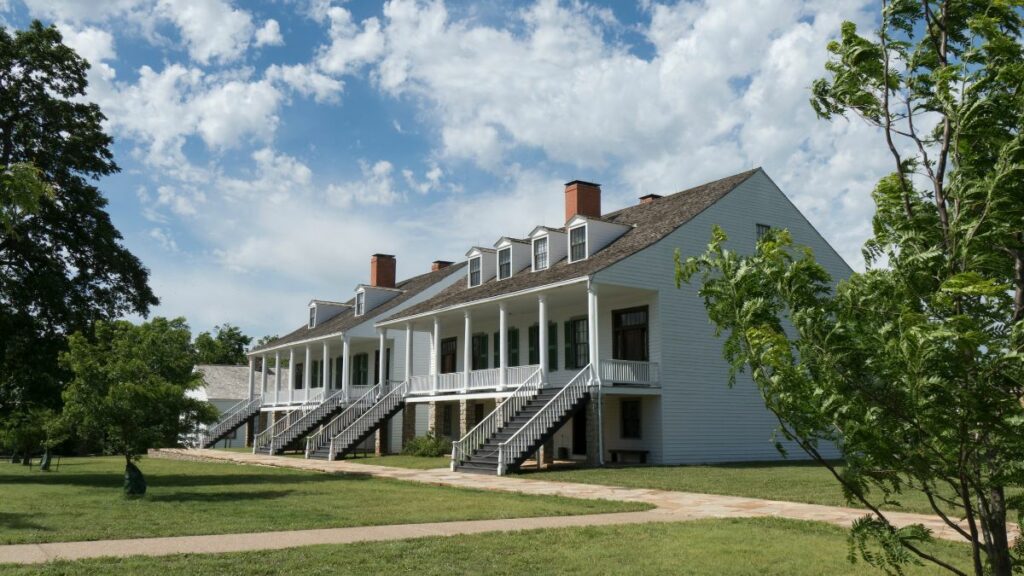
Established in 1842, Fort Scott occupies a prominent spot in Bourbon County, southeastern Kansas.
Named after the esteemed General Winfield Scott, this fort was initially envisioned as part of a defense line meant to protect the US from potential foreign invasions and keep the peace among various Native American tribes after their forced relocation from traditional territories.
In the tumultuous 1850s, Kansas became a focal point for a national debate that threatened to split the United States apart: the issue of slavery.
The period, infamously known as “Bleeding Kansas,” witnessed violent clashes between pro-slavery “Border Ruffians” and anti-slavery “Free-Staters.”
Fort Scott was right in the heart of this maelstrom. With the passage of the Kansas-Nebraska Act in 1854, which allowed territories to decide the slavery question based on popular sovereignty, Fort Scott became a strategic location.
The fort and the surrounding town witnessed multiple skirmishes and contentious debates as both sides sought control.
Military Use and the Civil War
Although the U.S. Army officially decommissioned the fort in 1853, its significance didn’t wane. In the lead-up to the Civil War and during the war itself, Fort Scott transformed into a major supply depot, supporting Union forces.
It also served as a haven for refugees, particularly those fleeing the violence spurred by the slavery question.
Besides its role as a supply base, Fort Scott was a hub for recruitment and training. Troops marshaled here participated in key campaigns against Confederate forces, ensuring the region remained under Union control.
Preservation and Legacy
Recognizing its profound historical significance, Fort Scott was designated a National Historic Site in 1978. Today, it stands preserved, offering visitors a glimpse into the turbulent era leading up to the Civil War.
The site showcases original buildings, period artifacts, and interpretive exhibits, ensuring the stories of those tumultuous times live on.
3. Fort Riley
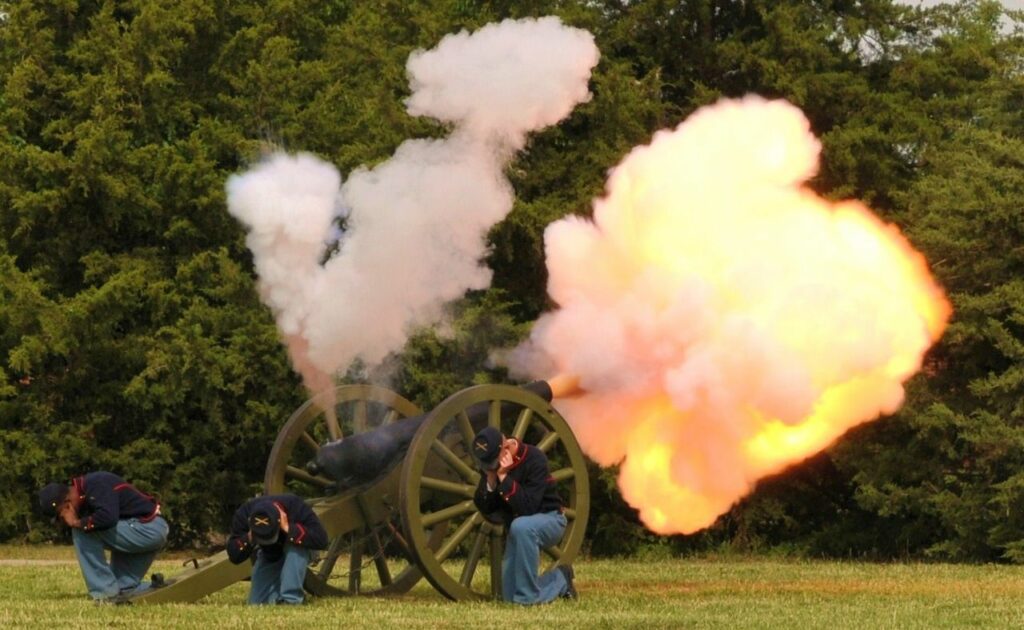
Established in 1853, Fort Riley lies near the confluence of the Smoky Hill and Republican rivers in northeastern Kansas. Its foundation came during escalating tensions between settlers and Native American tribes.
The fort’s prime location was chosen to protect those traveling along the Oregon and Santa Fe Trails and establish a military presence in the central plains.
As with many forts in Kansas, the shadow of the impending Civil War cast its gloom over Fort Riley.
As tensions mounted during the “Bleeding Kansas” era, the fort found itself in a crucial position, serving as a bulwark for Union forces against Confederate aspirations in the region.
Throughout the war, Fort Riley stood as a bastion of support, housing troops, acting as a training ground, and facilitating the movement of supplies.
Into the World Wars
Fast forward to the 20th century, and Fort Riley’s significance grew. It became a primary training facility and demobilization area during World War I. Its vast training grounds saw hundreds of thousands of troops prepare for the European frontlines.
World War II further solidified Fort Riley’s importance. Once again, it became a hive of activity, training divisions for combat. The fort also served as a prisoner of war camp, housing captured Axis soldiers.
Home of the Big Red One
Fort Riley’s legacy in modern times is intrinsically linked with the U.S. Army’s 1st Infantry Division, often referred to as the “Big Red One” because of its distinctive logo.
Designated as its official headquarters in 1955, the 1st Infantry Division is one of the most decorated divisions in the U.S. Army. With Fort Riley as its base, the division has played pivotal roles in various military operations, from the Cold War to contemporary conflicts in the Middle East.
Present-Day Significance and Operations
Today, Fort Riley is an active military post, a testament to its enduring strategic value. Its modern facilities, juxtaposed with historical sites, offer a unique blend of past and present.
The fort continues to train soldiers for various missions, all while preserving its rich history and fostering community ties.
4. Fort Larned
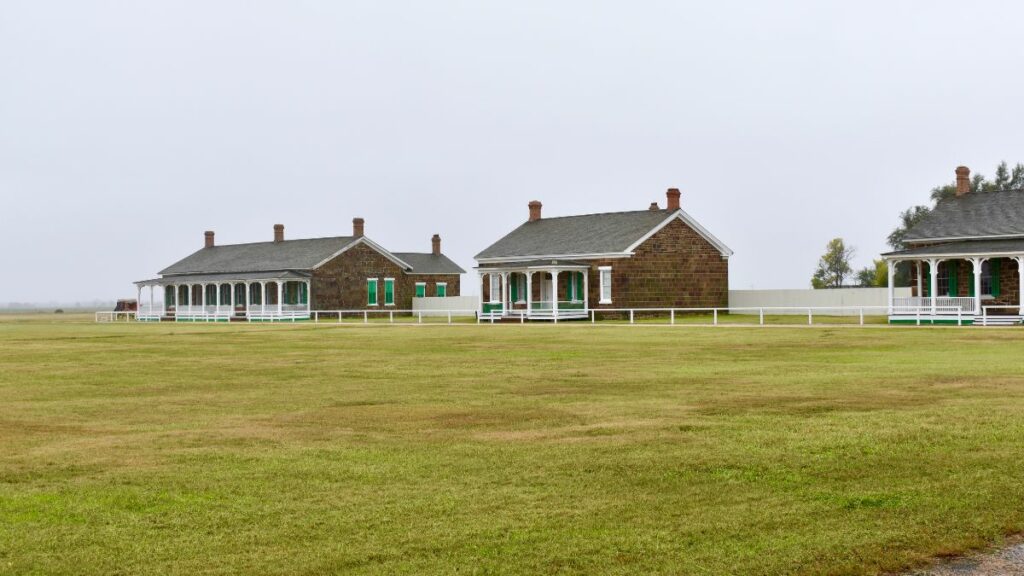
Nestled on the banks of the Pawnee Fork in present-day Kansas, Fort Larned began its journey in 1859 as a humble camp.
Recognizing the strategic significance of the location and the increasing challenges faced by those traveling along the Santa Fe Trail, the U.S. Army quickly moved to fortify the camp, transforming it into a formidable military post.
The Santa Fe Trail, a historic trade route from Missouri to New Mexico, was a lifeline for commerce and migration in the 19th century. However, its significance made it a target for potential threats, ranging from hostile Native American tribes to bandits.
Fort Larned was a beacon of protection for those venturing along the trail. Its soldiers were tasked with safeguarding travelers, ensuring smooth passage, and maintaining peaceful relations with the Plains Indians.
The fort’s presence undoubtedly facilitated the safe and efficient flow of goods, people, and information along the trail.
Relations with Native Americans
One of Fort Larned’s primary challenges was navigating the complex relations with the Plains Indians. The fort became a center for treaty negotiations and meetings between U.S. officials and Native American leaders.
The signing of various treaties, though often marred with issues, aimed to establish peace and define territories. Fort Larned played a crucial role in these diplomatic endeavors, even if many of the promises made by the U.S. government were not always honored in the long run.
Transition and Preservation
As the Santa Fe Railroad began to emerge and the dangers along the Santa Fe Trail decreased, the necessity of forts like Larned started to wane. By the late 1870s, the Army had abandoned Fort Larned, leaving it to the sands of time.
However, recognizing its historical significance, efforts were made to preserve the fort. In 1964, Fort Larned was designated a National Historic Site.
Today, visitors to the Fort Larned National Historic Site can explore the well-preserved original buildings, witness reenactments, and delve deep into the tales of the Santa Fe Trail and the soldiers and Native Americans who shaped its history.
5. Fort Hays
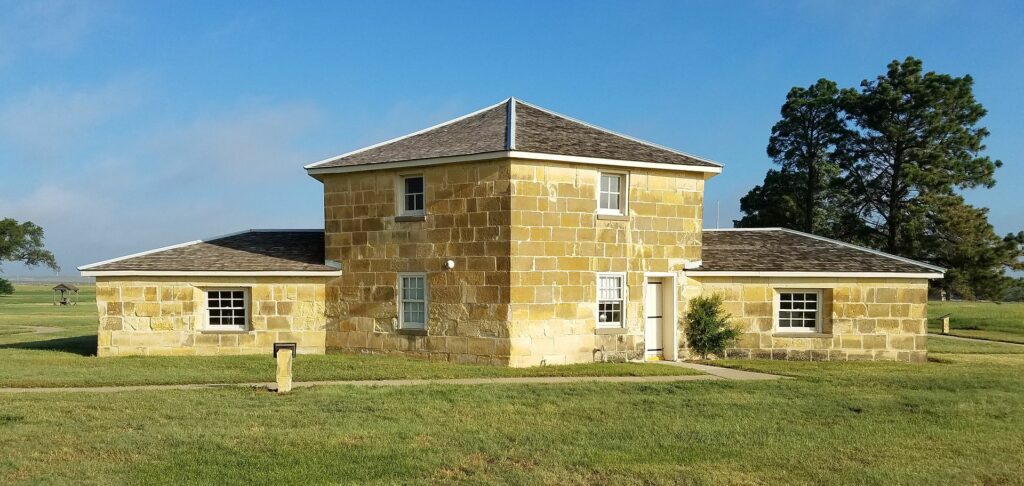
In the tumultuous 1860s, as the Indian Wars raged, the U.S. government needed a military presence to ensure the westward push of settlers and railroads.
Against this backdrop, Fort Hays was established in 1867 near Kansas’s Big Creek and North Fork Big Creek confluence. The fort’s primary mission was to protect settlers and railroad workers against potential threats, especially from Plains Indians defending their territories.
Fort Hays quickly became a linchpin in the U.S. Army’s operations during the Indian Wars. Its soldiers frequently patrolled the surrounding areas, ensuring the safety of settlers, railroad construction crews, and vital supply routes.
Clashes with Native American tribes, resisting the encroachment on their lands and way of life, were common.
The fort also served as a base for several military campaigns to relocate Native American tribes to reservations, a policy that, while considered necessary by the U.S. government of the time, led to significant hardships and displacement for the tribes involved.
Gateway to Western Kansas
Beyond its military significance, Fort Hays played a pivotal role in Kansas’s broader westward expansion and settlement.
The fort facilitated the construction of the Union Pacific Railroad, which was instrumental in opening western Kansas to settlers.
As more settlers arrived, towns sprouted up around the fort, and Fort Hays became a hub of commerce, communication, and community.
With its strategic location, the fort served as a vital supply point, ensuring pioneers had the resources they needed as they ventured west. Its presence provided security and stability, encouraging more families to journey and settle in the region.
Preservation and Legacy
While Fort Hays was officially decommissioned by the U.S. Army in 1889, its legacy didn’t fade. Recognizing its historical significance, efforts were initiated to preserve the fort’s remnants.
Today, the Fort Hays State Historic Site stands as a testament to the fort’s rich history, showcasing original buildings, artifacts, and interpretative exhibits that transport visitors back to the era of westward expansion.
6. Fort Dodge
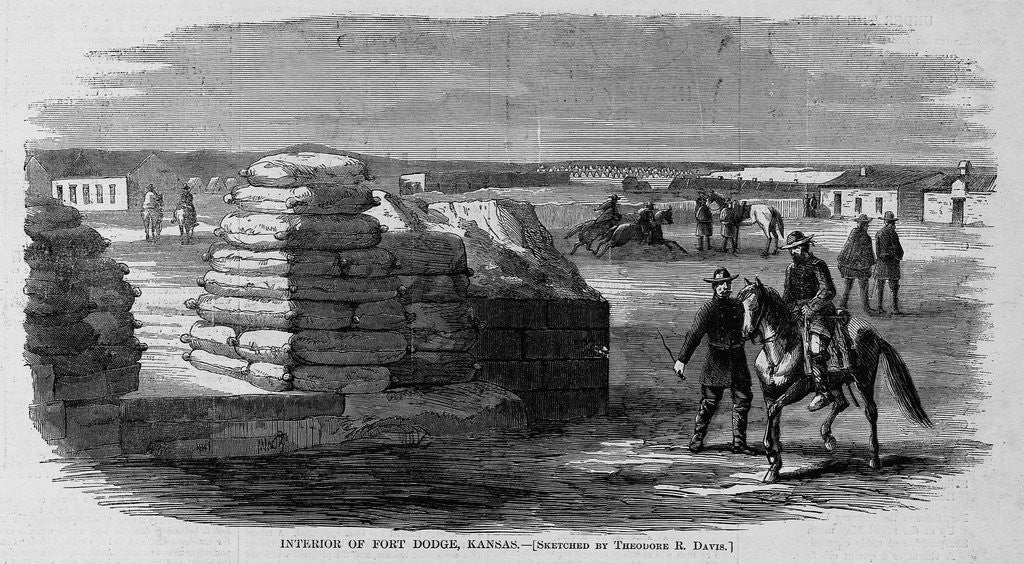
As the Civil War neared its conclusion in 1865, another conflict, the Indian Wars, escalated in the Western frontier.
It was in this tumultuous context that Fort Dodge was founded, located along the Santa Fe Trail near present-day Dodge City, Kansas.
With its establishment, the fort aimed to address the growing need for protection and support for those traversing this vital trade route.
The Santa Fe Trail was critical for commerce and communication between the U.S. territories and the West. However, with its importance came inherent risks.
Travelers, traders, and settlers often faced threats from Native American tribes, bandits, and other potential adversaries.
Fort Dodge quickly became a linchpin in the defense and operation of the trail. Its troops, always on high alert, patrolled stretches of the trail, ensuring the safety of caravans and individuals.
These patrols were instrumental in reducing attacks and ensuring the fluid operation of trade and migration along the route.
Serving as a Vital Supply Post
Beyond its protective role, Fort Dodge was renowned as a major supply post. Given its strategic position on the Santa Fe Trail, it was perfectly poised to provide military units and settlers, traders, and travelers.
From food to munitions, Fort Dodge ensured that vital resources reached those who needed them.
Moreover, the fort often acted as a sanctuary for weary travelers, offering medical assistance in its hospital and shelter from potential threats. Its presence undoubtedly facilitated smoother journeys for many along the Santa Fe Trail.
Transition and Legacy
As the years went by and the threats along the Santa Fe Trail diminished, especially with the advent of railroads, Fort Dodge’s military importance began to wane.
Officially decommissioned in 1882, the fort became a home for disabled veterans, ensuring it continued serving a noble cause.
Today, the fort’s legacy is preserved at the site, where visitors can explore its historic structures, learn about its pivotal role in protecting the Santa Fe Trail, and understand its significance in the broader tapestry of American westward expansion.
7. Fort Wallace
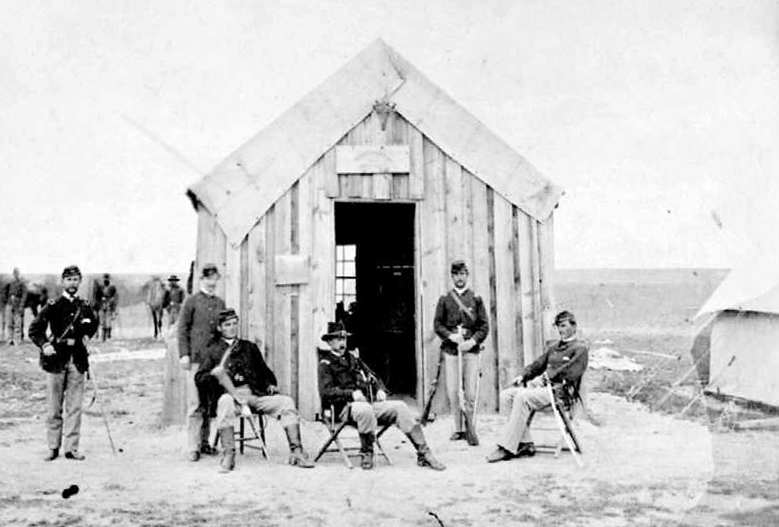
Amidst the backdrop of the 1860s, where the tensions of the Indian Wars heightened with every passing year, the need for fortified positions in the Western frontier became increasingly evident.
Thus, in the vast plains of Kansas, Camp Pond Creek emerged. However, as the site’s strategic importance became apparent and the need for a stronger defensive position grew, Camp Pond Creek became the formidable Fort Wallace.
The Plains Indians, including tribes such as the Cheyenne, Sioux, and Arapaho, struggled to protect their lands and way of life from encroaching settlers and the U.S. military. Fort Wallace, located strategically near the Smoky Hill River, became a focal point in this struggle.
Troops stationed at Fort Wallace frequently engaged in patrols, skirmishes, and even full-fledged battles against Native American warriors. The fort acted as a deterrent, aiming to keep the vital routes and surrounding settlements safe from potential attacks.
Life at Fort Wallace
Life at Fort Wallace was not just about conflict. The fort was a bustling community, with soldiers, civilians, and sometimes even Native American scouts coexisting.
Many structures were inside its walls, including barracks, stables, a hospital, and more. It was a beacon of civilization in what many settlers considered the ‘wild’ west.
The fort also served as a base for exploratory missions, aiming to chart and understand the vast territories of the West. Some notable figures, including George Armstrong Custer, once called Fort Wallace their temporary home.
Decline and Preservation
As the Indian Wars drew to a close and the need for military forts in the region decreased, Fort Wallace, like many of its contemporaries, faced decommissioning. By the late 1880s, the fort was officially abandoned by the U.S. Army.
However, recognizing its rich history and the stories it held, efforts were made to preserve Fort Wallace’s legacy. Today, the Fort Wallace Museum offers visitors a glimpse into the challenges, triumphs, and daily lives of those who once resided there.
8. Fort Zarah
As the 1860s unfolded, the significance of the Santa Fe Trail in the Western frontier’s commerce and migration was undeniable.
Yet, the trail was fraught with perils, from unpredictable weather to potential confrontations with Native American tribes. It was clear that strategic points along this vital route needed protection.
Thus, in response to this need, Fort Zarah emerged in 1864 near the confluence of the Walnut and Arkansas rivers.
Fort Zarah’s primary objective was to ensure the safety and smooth passage of travelers, traders, and settlers along the Santa Fe Trail. The fort’s soldiers often patrolled stretches of the trail, acting as both a deterrent and guardian against any potential threats.
In addition to patrols, the fort was a refuge for weary travelers. Its strategic location meant that many journeying along the trail would pass through or near Fort Zarah, benefiting from the sense of security its presence provided.
Life at Fort Zarah
Despite its temporary nature, life at Fort Zarah was a microcosm of the frontier military life of the time.
The fort, though smaller than some of its contemporaries, boasted a variety of structures, including barracks for the troops, stables for horses, and rudimentary facilities for supplies and trade.
Soldiers stationed at Fort Zarah faced the potential threat of conflicts and environmental challenges, from harsh winters to scorching summers.
Their dedication ensured that, for the period it was active, Fort Zarah fulfilled its protective mandate.
A Brief Existence
Fort Zarah’s active service was notably short-lived. By 1869, the fort was decommissioned just five years after its establishment.
The decline in threats along the Santa Fe Trail and the evolution of transportation methods, particularly the emergence of the railroad, reduced the necessity for such forts.
However, while its lifespan was brief, the impact of Fort Zarah on the Santa Fe Trail’s history and the safety of its travelers was substantial.
9. Fort Aubrey
The 1860s were a time of profound change and uncertainty in the American West.
As settlers, traders, and pioneers increasingly relied on the Santa Fe Trail, the need for protection along this vital route became paramount. Answering this call was Fort Aubrey, strategically placed to shield travelers from potential threats and facilitate the West’s burgeoning growth.
In the mid-1860s, Fort Aubrey was situated near the Arkansas River, an essential waterway for commerce and navigation. Its proximity to the river and the Santa Fe Trail made it a crucial juncture for those journeying westward.
With its troops regularly patrolling segments of the trail and its vicinity, the fort provided a much-needed sense of safety. Many a traveler found solace in the protective shadow of Fort Aubrey, knowing that its presence reduced the risks of their journey.
Daily Life at Fort Aubry
Life at Fort Aubrey encapsulated the essence of frontier military existence. Soldiers had to be vigilant and prepared for potential skirmishes or larger confrontations.
Yet, amidst the challenges of duty, there was camaraderie, with tales of heroics, shared hardships, and mutual support shaping the narrative of the fort.
Although Fort Aubrey might not have had the grandeur or size of some other forts, it was equipped with essential facilities.
Barracks, supply storerooms, and stables were among the structures that dotted its landscape, each playing a role in the fort’s daily operations.
A Fleeting Chapter in Frontier History
Fort Aubrey’s active period was relatively brief, like many frontier forts established during this era.
As threats along the Santa Fe Trail diminished and the region’s logistics evolved, particularly with the advent of railroads, the necessity for such outposts decreased.
By the late 1860s, Fort Aubrey was decommissioned, leaving behind tales of its brief but impactful existence.
10. Fort Downer
The late 19th century in the American West was marked by significant turbulence and change. As settlers and pioneers advanced further into territories traditionally inhabited by Native American tribes, tensions inevitably rose.
The Indian Wars, a series of conflicts between the U.S. military and various Native American groups, intensified during this period. In response to the mounting challenges, forts like Fort Downer were established to support the military’s objectives and campaigns.
Positioned in a region that saw frequent engagements during the Indian Wars, Fort Downer quickly became a vital military outpost. Its primary role was to serve as a base for troops embarking on campaigns against Native American tribes resisting the encroachment on their lands.
The fort provided logistical support, including supplies, medical facilities, and strategic planning headquarters, crucial for the success of these campaigns.
Life Within Fort Downer
The daily life at Fort Downer was a blend of rigorous military discipline, preparation for potential confrontations, and the mundane tasks that kept the fort functional.
Soldiers drilled regularly, ensuring they were combat-ready at a moment’s notice. Simultaneously, the fort’s internal community, comprising not just soldiers but also medical staff, blacksmiths, cooks, and more, ensured that life went on seamlessly.
Stories from Fort Downer often speak of the close-knit bonds formed within its walls, a camaraderie forged in the crucible of shared duty and purpose.
Supporting the End of an Era
While Fort Downer played a significant role during the Indian Wars, the fort’s importance waned as these conflicts drew close.
The resolution of major hostilities and the changing dynamics of the American West meant that many forts, including Fort Downer, saw a decrease in their strategic value.
By the end of the 19th century, with the Indian Wars effectively over, Fort Downer’s active service ended. The fort transitioned from a bustling military outpost to a historical landmark, symbolizing a challenging chapter in American history.
Related: 10 Historic Forts in Kentucky
The Santa Fe Trail: A Lifeline of Commerce and Connection
The Santa Fe Trail, stretching from the Missouri River to the vibrant city of Santa Fe, New Mexico, is a monument to the spirit of exploration, trade, and perseverance.
Beginning in the early 19th century, this historic route witnessed countless footsteps of traders eager to tap into the markets of the Southwest, settlers searching for new horizons, and soldiers marching to ensure the safety and interests of the burgeoning United States.
The trail was not just a pathway for goods but a cultural exchange conduit. As traders moved along the trail, they introduced goods, ideas, and practices between the Midwest and the Southwest.
The interaction fostered economic interdependence and deepened cultural connections, with goods like Mexican silver and blankets moving northward while American manufactured goods flowed south.
Guardians of the Trail: The Role of Forts
Understanding the trail’s paramount significance, the U.S. government quickly recognized the necessity of protection and oversight. As a result, a series of forts sprouted along the Santa Fe Trail, acting as sentinels, ensuring the safety of its travelers and facilitating trade.
Among these, Fort Dodge rose to prominence. Positioned strategically, this fort was more than just a military outpost; it was a beacon of safety for traders and settlers alike.
Its soldiers, ever vigilant, patrolled the trail, ensuring a relative sense of security against potential Native American confrontations, bandits, and other threats.
Dodge City: A Hub of Activity
Adjacent to Fort Dodge, Dodge City emerged as a bustling hub of activity. This frontier town, known for its lively spirit and resilience, became synonymous with the American West’s image.
As a nexus of trade, Dodge City welcomed traders, cattle drivers, and adventurers, offering them goods, services, and a brief respite from the trail’s rigors. Moreover, the town and the fort shared a symbiotic relationship, with the latter providing protection and the former offering supplies and commerce.
Related: 10 Historic Forts in Massachusetts
Visiting The Historic Forts in Kansas Today
Today, the once bustling forts that shaped the American West are silent sentinels to history. However, their quiet belies the profound stories they hold.
For modern visitors, these forts beckon with tales of bravery, enterprise, and the indomitable spirit of a nation on the move. But visiting them offers more than just a history lesson; it promises a profoundly personal and evocative journey.
Walking the Parade Grounds: Footsteps of Heroes
Stepping onto the parade grounds of these forts is like walking in the footsteps of the many soldiers who once trained, marched, and stood guard here.
These open spaces, once alive with the sounds of military drills, bugle calls, and the chatter of soldiers, now offer a serene environment where one can reflect upon the discipline and dedication of the men and women who served.
Exploring Original Structures: Walls That Talk
The forts are dotted with original buildings, each standing as a testament to the architectural and engineering prowess of the past.
Wandering these corridors, touching the rough-hewn logs or the cold stone walls, visitors can almost hear the murmurs of yesteryears — the strategies discussed in officers’ quarters, the camaraderie in the barracks, or the hustle and bustle in the mess halls.
These structures, preserved for posterity, give an authentic glimpse into the daily life and challenges of the frontier era.
National Cemeteries: Honoring the Fallen
Perhaps the most poignant of all experiences is a visit to the national cemeteries near some of these forts. Here, in the meticulously maintained rows of gravestones, lies the final resting place of soldiers, many of whom made the ultimate sacrifice.
Paying respects at these sacred grounds connects visitors to the personal stories and gifts often overshadowed by grand historical narratives.
Interactive Experiences: Bridging the Past and Present
Many forts, recognizing the importance of experiential learning, have incorporated interactive exhibits, reenactments, and guided tours.
These endeavors bring history alive, allowing visitors to observe and engage, immerse, and even participate in recreating moments from the past.
If you have visited any of these forts, we would love to hear about your experience in the comments section below.

Cory is a website owner and content creator who enjoys fishing, history, coin collecting, and sports, among other hobbies. He is a husband and father of four.
Romans 15:4 For whatever was written in former days was written for our instruction, that through endurance and through the encouragement of the Scriptures we might have hope.


I enjoyed your write-ups on the various forts, and I hope to visit them in the summer of ’24!
Hi David,
I’m glad you enjoyed the article! Thanks for the comment and I’m sure you will have a fun summer visiting the old forts.